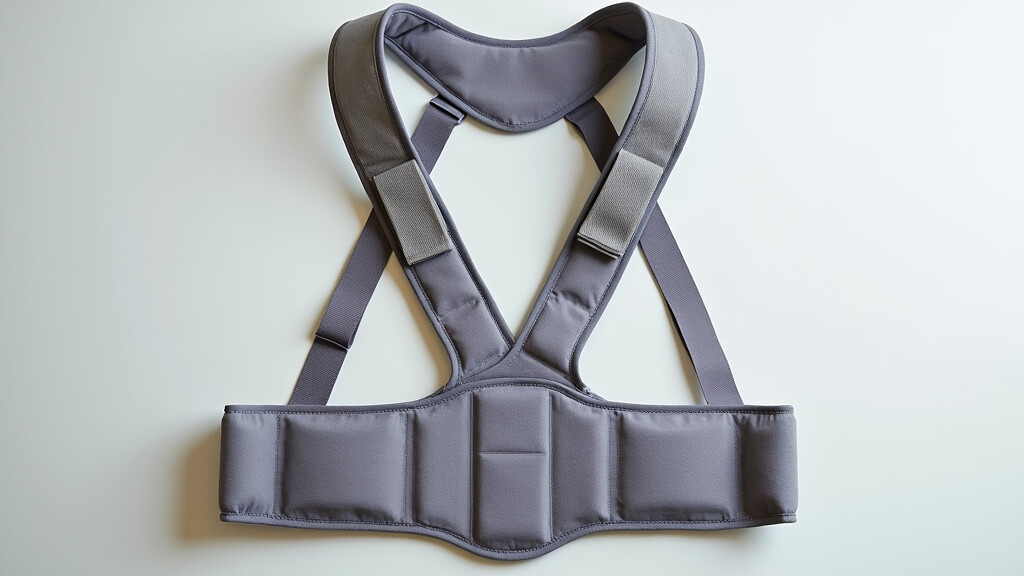Spending hours at a desk can take a serious toll on your posture. In this article, we shall be looking at smart posture correction for office workers: 7 tips and tools. For office workers, poor posture is one of the leading causes of chronic back pain, neck strain, and long term spinal issues. With the rise of remote work and screen heavy jobs, it’s more important than ever to incorporate smart posture correction techniques into your daily routine. Fortunately, with a combination of practical tips and innovative tech tools, you can greatly improve your posture and protect your long term health.
This comprehensive guide explores smart posture correction for office workers, including seven essential tips and tools designed to align your spine, ease discomfort, and support a healthier workday.
Why Posture Matters for Office Workers
Good posture isn’t just about looking confident. It plays a critical role in your overall health and well being. Poor posture can lead to:
- Chronic back and neck pain
- Tension headaches
- Reduced lung capacity
- Fatigue
- Poor circulation
- Long term musculoskeletal problems
For office workers, sitting for long periods with incorrect alignment puts strain on your muscles and joints. Over time, this stress can lead to injury, discomfort, and decreased productivity.
Tip #1: Evaluate and Adjust Your Workspace
Creating an ergonomic workspace is the first step toward improving posture. Here are the key components:
Desk and Chair
- Adjustable Chair: Choose a chair that supports your lower back and allows your feet to rest flat on the floor.
- Desk Height: Ensure your desk height allows your elbows to form a 90-degree angle when typing.
Monitor Placement
- Eye Level: Your monitor should be at eye level to prevent tilting your head downward.
- Distance: Position your screen about an arm’s length away to reduce eye strain.
Accessories
- Footrest: Helps keep your legs at a comfortable angle if your feet don’t reach the floor.
- Keyboard Tray: Keeps your wrists in a neutral position while typing.
Tip #2: Use Smart Posture Correction Devices
Technology can play a major role in helping you monitor and improve your posture. Here are some of the best smart posture devices:
1. Upright GO 2
A small wearable device that sticks to your upper back and vibrates gently when you slouch. It pairs with an app to track your posture over time.
2. Lumo Lift
Another posture wearable that monitors shoulder alignment and sends real time alerts.
3. Smart Posture Corrector Braces
These combine traditional posture braces with Bluetooth sensors that sync to your smartphone for real time posture feedback.
4. Smart Chairs
Chairs like the ErgoChair Pro or BackStrong C1 come with ergonomic support and smart feedback features to encourage proper posture.
Tip #3: Incorporate Movement into Your Workday Activities
Sitting for long periods, even with good posture can still be harmful. Incorporate regular movement to reduce strain.
Ideas to Stay Active:
- Use a sit stand desk to alternate between sitting and standing.
- Set a timer to stand and stretch every 30-60 minutes.
- Take short walks during breaks or meetings.
- Desk exercises: Shoulder rolls, neck stretches, seated leg lifts.
Smart Tools:
- Fitness trackers (like Fitbit or Apple Watch) can remind you to move.
- Under desk ellipticals or bike pedals for light activity while sitting.
Tip #4: Practice Daily Posture Exercises
Improving posture requires more than just ergonomic furniture. Daily exercises can strengthen your core and correct imbalances.
Effective Posture Exercises:
- Wall Angels: Strengthen back and shoulder muscles.
- Chin Tucks: Align the cervical spine.
- Planks: Build core strength.
- Cat-Cow Stretch: Increase spine flexibility.
- Thoracic Extensions: Open up the upper back.
Aim to spend at least 10 minutes a day doing posture specific stretches and exercises.
Tip #5: Mind Your Posture Outside the Office
What you do after work also impacts your posture. Here’s how to stay aligned beyond the desk:
- Sleep with support: Use a pillow that keeps your spine aligned.
- Watch your phone habits: Avoid “text neck” by holding your phone at eye level.
- Driving posture: Sit upright with your back supported and knees slightly bent.
Smart Home Gadgets:
- Smart pillows: Help align your neck and spine during sleep.
- Posture tracking apps: Remind you to sit upright and stretch even at home.
Tip #6: Stay Consistent with Good Habits
Consistency is key when it comes to posture correction. Here are ways to stay on track:
Create Reminders:
- Set alarms for stretch breaks.
- Use sticky notes as visual cues to check your posture.
Monitor Progress:
- Use posture tracking apps like Posture Reminder, Perfect Posture, or Stand Up!
- Journal your improvements and any pain reductions.
Reward Yourself:
- Set small goals and treat yourself when you hit posture milestones. Making gradual progress is the way forward.
Tip #7: Know When to Seek Professional Help
Sometimes, technology and tips aren’t enough. If you experience persistent pain or discomfort, consult a professional.
Professionals Who Can Help:
- Physical therapists: Offer tailored exercises and posture correction plans.
- Chiropractors: Address spinal misalignments.
- Ergonomic consultants: Optimize your home or office setup.
Pros and Cons of Smart Posture Tools
Pros:
- Real-time feedback
- Encourages awareness and good habits
- Tracks long-term progress
- Non invasive and easy to use
Cons:
- May require consistent charging
- Some devices are pricey
- Initial discomfort from wearables
Q&A Section
Q: How long does it take to improve posture?
A: You may notice improvements within a few weeks if you’re consistent with posture exercises and ergonomic changes. Exercise is key here!
Q: Are smart posture correctors safe?
A: Yes, most are safe and non invasive, designed to gently guide rather than force posture corrections.
Q: Can I use more than one tool at a time?
A: Absolutely. Combining tools (e.g., a smart wearable and ergonomic chair) often yields better results.
Q: Do posture correctors work without exercise?
A: Tools help, but exercises are essential for strengthening the muscles that support good posture.
Final Thoughts
Smart posture correction for office workers is about more than sitting up straight. It’s a full body approach involving ergonomics, technology, movement, and consistency. By investing in posture improvement gadgets, the 7 tips and tools listed in this article and forming healthier habits, you can reduce discomfort, boost productivity, and prevent long term issues.
Whether it’s a smart posture tracker or a daily stretch routine, your future self will thank you for making posture a priority today.
Many thanks for reading through this article on Smart Posture Correction For Office Workers-7 Tools And Tips. I really hope that you have found it to be both helpful and informative in your search for suitable smart posture correction products. Why not take a look through our blog? We have more really helpful articles and tips on all aspects of smart posture correction. You might like our related articles which are titled 7 Smart Posture Hacks For Your Daily Routines and Top 10 Best Posture Correctors For 2025
**Here is a bit of transparency. Our website www.vertevia.com does contain affiliate links and Amazon links. So, if you did make a purchase through the website, we may receive a small commission. This is at no extra cost to you whatsoever. It’s just a way for you to support us as we continue to bring you top quality content**
All the best!
Eamon




